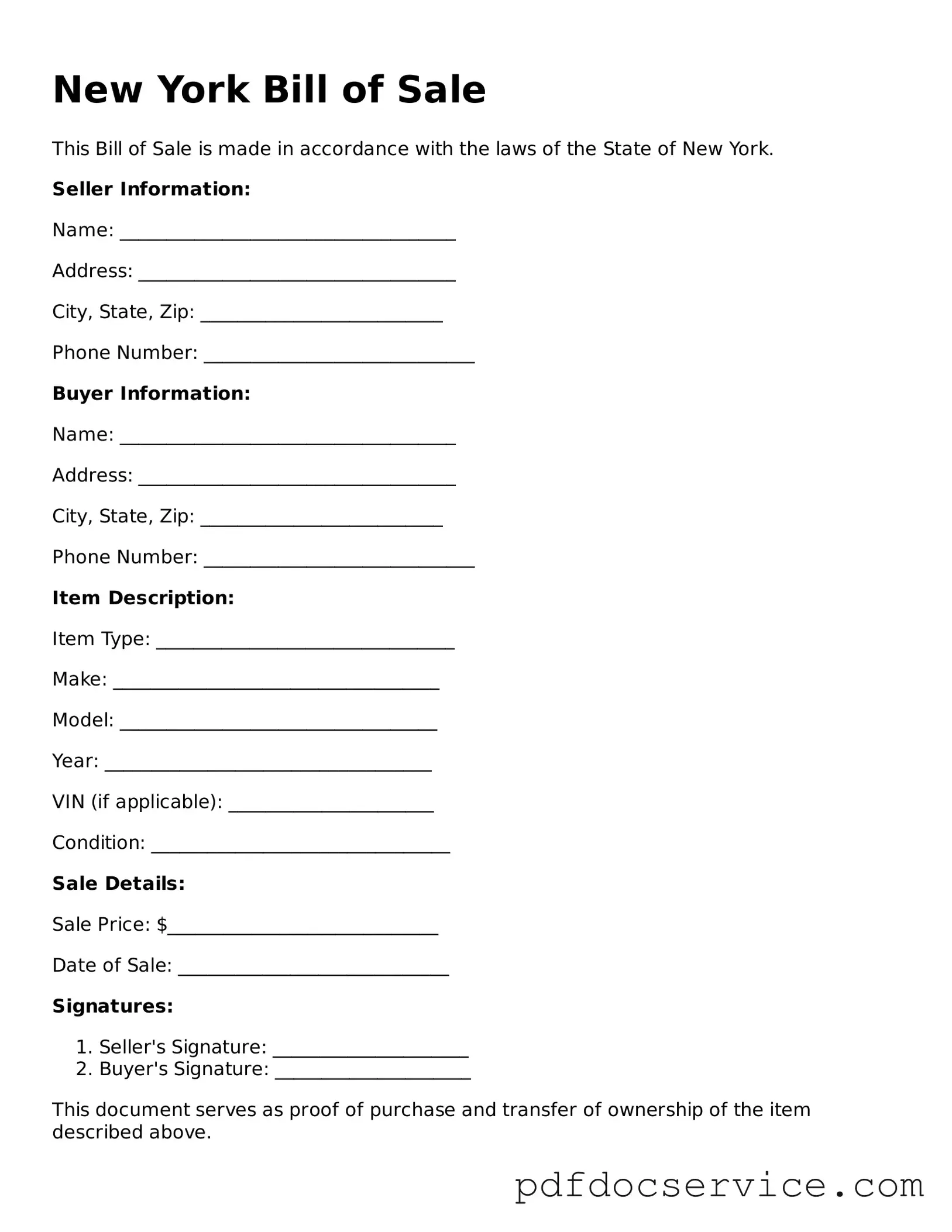The New York Bill of Sale form serves as a crucial document in the transfer of ownership for personal property, providing both buyers and sellers with a clear record of the transaction. This form typically includes essential details such as the names and addresses of both parties, a description of the item being sold, and the purchase price. Additionally, it often requires the date of the sale, ensuring that both parties have a mutual understanding of when the transfer occurred. In New York, having a Bill of Sale can protect the rights of both the buyer and the seller, offering proof of ownership and serving as a safeguard against potential disputes in the future. While the form may vary slightly depending on the type of property being sold—be it a vehicle, furniture, or other personal items—the core elements remain consistent. Understanding the importance of this document can help facilitate smoother transactions and provide peace of mind for all involved.
